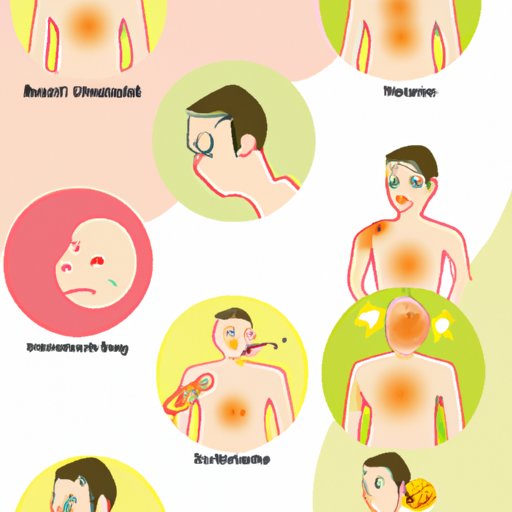Introduction
A boil is a common skin condition that develops when a hair follicle or oil gland becomes infected. It is typically caused by bacteria, such as staphylococcus aureus, although other organisms may also be responsible. Boils can occur anywhere on the body, but are most often found on the face, neck, armpits, buttocks, and thighs. They usually start out as a small, red bump that gradually becomes larger and more painful over time.
Boils can range in size from a pea to a golf ball, and they may be filled with pus. In some cases, multiple boils may form together in one area, forming what is known as a carbuncle. Boils can be very uncomfortable and can cause significant pain and discomfort. If left untreated, they can become infected and spread to other areas of the body.

Causes and Symptoms of Boils on the Skin
The primary cause of boils on the skin is a bacterial infection. Staphylococcus aureus is the most common type of bacteria associated with boils, but other types of bacteria can also cause them. Boils can also be caused by clogged sweat glands that become infected. Poor hygiene, such as not washing the affected area regularly, can also lead to boils.
Common symptoms of boils on the skin include swelling, redness, tenderness, and pain. The affected area may also feel warm to the touch. As the infection progresses, the boil may fill with pus and develop a “head” that can be drained. In some cases, the boil may burst and release pus, which can spread the infection to other areas of the body.
Home Remedies for Boils on the Skin
Most minor boils can be treated at home with simple, natural remedies. Applying a warm compress to the affected area several times a day can help reduce pain and encourage drainage. Soaking the area in an Epsom salt bath can also provide relief. Herbal remedies, such as tea tree oil and echinacea, can also be applied topically to help reduce inflammation and promote healing.

When to See a Doctor for Boils on the Skin
In some cases, boils may require medical attention. If you have a high fever or if the boil is unusually swollen or red, you should seek medical advice. Additionally, if the boil does not improve after a few days of home treatment, it is best to see a doctor to rule out any underlying infections.
How to Prevent Boils on the Skin
Good hygiene is the best way to prevent boils on the skin. This includes washing the affected area regularly with warm water and soap, avoiding sharing towels or personal items, and wearing loose-fitting clothing to allow air to circulate around the body.

Common Treatments for Boils on the Skin
If a boil requires medical attention, the doctor may prescribe antibiotics to treat the infection. In some cases, the doctor may opt to surgically remove the boil. Other treatments, such as incision and drainage, may also be used to remove the pus and reduce the risk of further infection.
Conclusion
Boils on the skin are a common skin condition caused by a bacterial infection. Most minor boils can be treated at home with simple remedies, such as warm compresses and herbal remedies. However, if the boil does not improve with home treatment, it is best to seek medical advice. Good hygiene is the best way to prevent boils, and antibiotics, surgery, or incision and drainage may be used to treat severe cases.


